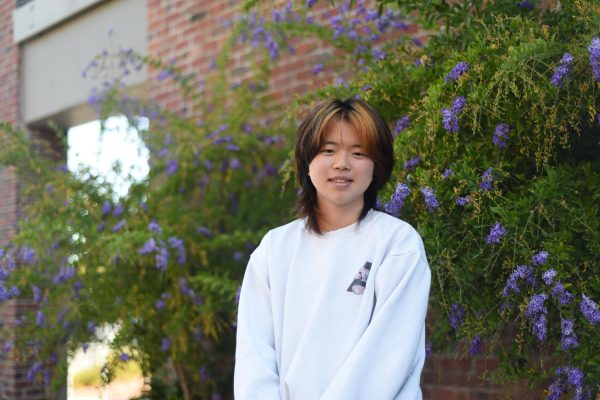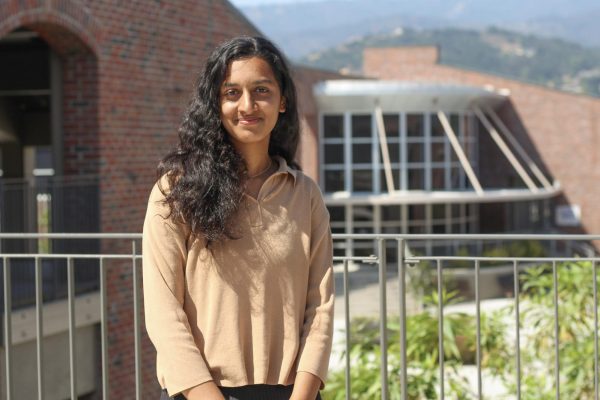As a former MVHS student, math teacher Katie Collins recalls thinking the school was overly competitive. The students and teachers put a heavy emphasis on grades, which encourages students to compromise integrity and moral values to be more competitive. She says that this environment creates a toxic environment where students forget their individuality and unique qualities. She believes teachers play a role in this toxicity, but the toxic environment largely is due to students’ attitudes.
“It all hinges on the environment that kids are in and whether or not it is a room for their own success, promotes the success of all, values each individual for their contribution and tries to remind kids that who they are is much more than a grade on a paper,” Collins said. “It makes me sad when I look at two resumes and those kids look the same, because they know they’re not the same. They’re both really special and unique. I’m not sure that MVHS kids remember that about themselves, and that makes me feel sad.”
English teacher Shozo Shimazaki agrees and adds that students tend to prioritize school work over building relationships and community. During his time teaching, Shimazaki has noticed that even when teachers assign excess work, students will still perform it and often not push back. Other teachers then notice students deprioritizing their class to finish work for other classes, which in turn drives the teacher to increase rigor to gain students’ attention. Shimazaki believes the pattern leads to a more competitive atmosphere where students are not only judging each other, but teachers are judging other teachers and creating toxicity — which distracts teachers and students from what they should be doing.
“Teachers are here for the students and to inspire learning and understanding. If a student is preoccupied mainly with the outcome, then the focus changes away from learning and to the grade they’re gonna get,” Shimazaki said. “So as a teacher, I’m always fighting against that difference of our purpose here.”
Collins also wants to combat toxic student mentalities and attempts to do so by supporting all of her students and giving everyone a place to express their thoughts and opinions. She emphasizes not only supporting people’s individual strengths but also the class’s collective skills by trying her best to reward positive collaborative behavior. Shimazaki also adjusts his teaching as a response to MVHS’ environment, trying to emphasize the importance of learning not only for a grade.
“There can be some parts of our culture that take the emphasis away from building relationships with others and building community,” Shimazaki said. “In my curriculum, I try to always make the novel or reading connect to students so students may have a chance to actually reflect on their own lives in assignments and what they present.”
However, if a student feels overwhelmed and goes into counselor Belinda Olson’s office, she hopes to provide them with support in what they are struggling with and help them advocate for themselves in classes if necessary. As a newer counselor, some students Olson gets are those who regularly went to her predecessor, Hannah Banks, so she refers to notes written on Infinite Campus to figure out the best way to help them. For certain students, if they are struggling with a certain class, Olson tries to meet with the teacher to start a more productive conversation in helping the student.
“We can’t change the whole environment,” Olson said. “But we can change what’s right in front of us — our environment, whether or not it’s a classroom. For me as a counselor, it’s one conversation or one classroom presentation or one parent night at a time, where it’s just giving people permission to take a breath and assess and engage their temperature of, ‘Is this healthy or not?’ And really thoroughly think about how if it’s not healthy, why it isn’t and what are good things that are happening, and then try to make deliberate efforts to balance and adjust that.”
Olson adds that another aspect teachers can work on in reducing academic stress is communicating with other teachers in order to figure out if there are any tests assigned on the same day as other classes. When these departments link up, Olson finds that teachers are able to empathize more with a student who is taking multiple challenging classes and provide a space for students to talk to the teacher in case they have external events going on and would like to ask for an extension or other resources that could help them. By making efforts like this to create more positive environments, Collins believes that MVHS can reduce its toxicity.
“We are a community, and this community involves students, teachers, parents and administrators, everybody has a role to play,” Collins said. “I think sometimes we get caught up in blaming one over the other. But the reality is we all have to take some sort of responsibility and accountability for what we do. You are not passively going through this existence. As teachers, I think we have a responsibility to acknowledge individualism and specialness and create environments that promote positivity and less competition. But we are only one part.”











